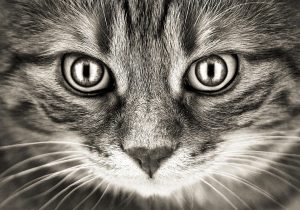
Achieving optimal health and wellness for your feline friend starts with a well-crafted feeding schedule. Cats, like humans, benefit from consistency and balance in their diet. A thoughtfully planned feeding routine not only ensures your cat receives the necessary nutrients but also contributes to their overall happiness and longevity. In this article, we will explore actionable advice and tips to help you master the art of feeding your cat.
Understanding Your Cat’s Nutritional Needs
Before diving into the specifics of a feeding schedule, it’s essential to understand your cat’s basic nutritional needs. Cats are obligate carnivores, meaning their diet must consist primarily of meat. They require a diet rich in protein and moderate in fats, with minimal carbohydrates. Key nutrients for cats include:
- Protein: Essential for growth, development, and maintenance of body tissues.
- Fats: Provide energy and help in the absorption of fat-soluble vitamins.
- Amino acids: Taurine and arginine are crucial for heart and eye health, as well as metabolic processes.
- Vitamins and minerals: Including vitamin A, vitamin D, calcium, and phosphorus for overall well-being.
- Water: Cats need adequate hydration to support kidney function and overall health.
Determining the Right Portion Sizes
Portion control is a significant aspect of a cat’s feeding schedule. Overfeeding can lead to obesity, while underfeeding can result in malnutrition. To determine the right portion size:
Consult Your Veterinarian
Your vet can provide personalized recommendations based on your cat’s age, weight, activity level, and health status. Regular check-ups will help adjust the portion sizes as your cat’s needs change over time.
Follow Feeding Guidelines
Most commercial cat food brands provide feeding guidelines on their packaging. While these are helpful starting points, they may need to be adjusted based on your cat’s individual needs.
Creating a Consistent Feeding Schedule
Consistency is key in maintaining your cat’s digestive health and preventing behavioral issues. A regular feeding routine helps regulate your cat’s metabolism and prevents overeating. Consider the following tips when creating a feeding schedule:
Determine the Number of Meals
Cats generally benefit from multiple small meals throughout the day. Two to three meals for adult cats and three to four meals for kittens are typically recommended. This approach mimics their natural hunting behavior and keeps their energy levels stable.
Set Specific Meal Times
Establish specific times for each meal and stick to them as closely as possible. Cats are creatures of habit, and a predictable schedule can reduce stress and anxiety.
Consider Your Cat’s Preferences
Some cats may prefer free feeding, where food is available at all times. However, this method can lead to overeating and obesity. If you opt for free feeding, monitor your cat’s weight and adjust portion sizes accordingly.
Choosing the Right Type of Cat Food
The type of cat food you choose plays a significant role in your cat’s health. Consider the following options:
Wet vs. Dry Food
Wet food has a higher moisture content, which can aid in hydration and kidney health. It is also usually more palatable for cats. Dry food, on the other hand, is convenient and helps maintain dental health. A combination of both can provide a balanced diet.
Quality Matters
Invest in high-quality cat food with real meat as the primary ingredient. Avoid products with excessive fillers, artificial preservatives, and by-products.
Adjusting the Feeding Schedule for Special Needs
Cats with specific health conditions or life stages may require adjustments to their feeding schedule:
Kittens
Kittens have higher energy needs and should be fed more frequently. Opt for specially formulated kitten food to support their growth and development.
Senior Cats
Older cats may benefit from a diet lower in calories but higher in easily digestible proteins. Monitor their weight and adjust the feeding schedule to prevent obesity or malnutrition.
Cats with Health Issues
Cats with medical conditions, such as diabetes or kidney disease, may require a specialized diet. Work closely with your veterinarian to develop a feeding plan tailored to their needs.
Monitoring Your Cat’s Health and Adjusting as Needed
Regularly monitor your cat’s health and adjust the feeding schedule as needed:
Weight and Body Condition
Keep an eye on your cat’s weight and body condition. A healthy cat should have a visible waistline and ribs that can be felt but not seen. Adjust portion sizes and meal frequency to maintain an ideal weight.
Behavior and Appetite
Changes in your cat’s behavior or appetite can indicate underlying health issues. If you notice any significant changes, consult your veterinarian promptly.
Conclusion
Mastering the meow involves understanding your cat’s nutritional needs, creating a consistent feeding schedule, and choosing the right type of food. By paying attention to portion sizes, meal frequency, and your cat’s individual preferences, you can ensure that your feline friend enjoys a healthy and happy life. Remember, regular monitoring and consultation with your veterinarian are essential to ensure your cat’s well-being over time.
By following these guidelines and adjusting as necessary, you’ll be well on your way to crafting the perfect feeding schedule for your beloved feline companion.
#ChatGPT assisted in the creation of this article.







